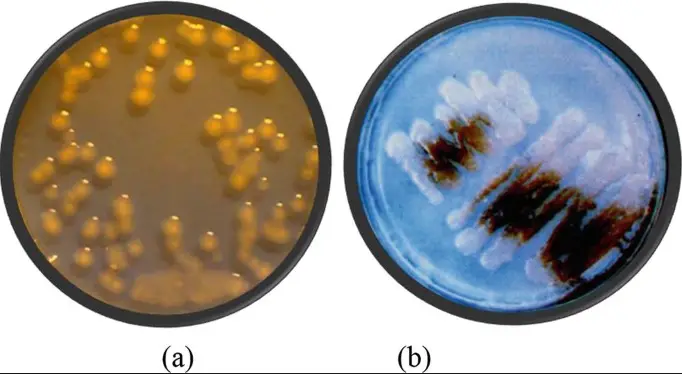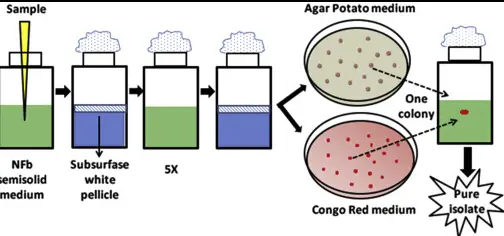Nitrogen is a vital element for plant growth, critical in the synthesis of proteins and other fundamental biological molecules. Yet, despite its abundance in the atmosphere, nitrogen is often the most limiting nutrient in agricultural settings. This is where nitrogen-fixing bacteria, such as Azotobacter and Azospirillum, play a crucial role, transforming atmospheric nitrogen into forms that plants can readily absorb.
Azotobacter and Azospirillum are both genera of bacteria that aid in nitrogen fixation but differ significantly in their physiology and ecological niches. Azotobacter is primarily found in neutral to alkaline soils, is free-living, and non-symbiotic, whereas Azospirillum, found in association with plant roots, performs in a semi-symbiotic manner, adapting well to slightly acidic to neutral soils. These differences affect their applications and effectiveness in various agricultural setups.
The significance of these bacteria extends beyond simple nitrogen fixation. Their ability to interact with plants influences soil fertility and plant health, offering sustainable alternatives to chemical fertilizers. These microbes not only contribute to the nitrogen economy of soils but also stimulate plant growth through the production of growth-promoting substances and other bioactive compounds.

Defining Azotobacter
General Characteristics
Azotobacter is a genus of bacteria known for its role in the nitrogen fixation process, essential for converting atmospheric nitrogen into a form usable by plants. These bacteria are free-living, meaning they do not require a host plant to survive. Typically, Azotobacter species are rod-shaped and have a thick, gelatinous capsule, which is critical for protecting them against harsh environmental conditions. They are also known for their ability to form cysts, enhancing their survival in unfavorable conditions.
Role in Nitrogen Fixation
Azotobacter plays a significant role in the agricultural sector by fixing atmospheric nitrogen through a process catalyzed by the enzyme nitrogenase. This conversion is vital as it helps in supplementing soil nitrogen levels without the need for chemical fertilizers. Nitrogen fixation by Azotobacter involves the reduction of atmospheric nitrogen to ammonia, which plants can readily absorb and use to synthesize proteins and other nitrogen-containing compounds.
Environmental Adaptations
Adaptability to various environmental conditions is a hallmark of Azotobacter. These bacteria can thrive in a range of soil types, primarily neutral to alkaline soils. They are aerobic, requiring oxygen to survive, which influences their spatial distribution in soil. Their ability to produce alginate, a polysaccharide that helps in forming a protective coating around the cells, allows them to resist desiccation and other environmental stresses, making them robust organisms in agricultural ecosystems.
Defining Azospirillum
Key Features
Azospirillum is another crucial genus of bacteria involved in nitrogen fixation, with a notable difference in its interaction with plants compared to Azotobacter. These bacteria are primarily associated with the roots of plants, forming loose associations known as associative symbioses. They are known for their spiral or curved rod shape, which is distinctively different from the typically straight rods of Azotobacter.
Nitrogen Fixation Capabilities
Azospirillum contributes significantly to plant growth by fixing nitrogen at the root level, providing a more targeted delivery of this essential nutrient. The process also involves the enzyme nitrogenase but occurs in close proximity to plant roots, where Azospirillum uses the exudates from roots as a source of energy for nitrogen fixation.
Preferred Habitats
The preferred habitats of Azospirillum are closely linked to their plant partners. They are commonly found in the rhizosphere, the soil region near plant roots, which provides them with the necessary organic compounds released by roots. This proximity to the root system facilitates the effective transfer of fixed nitrogen to the plant while allowing Azospirillum to benefit from the root exudates, creating a mutual benefit.

Physical Traits
Cellular Structure Comparison
While both Azotobacter and Azospirillum are gram-negative bacteria, their cellular structures show notable differences. Azotobacter cells are typically larger, with a more complex capsule that aids in environmental resilience. On the other hand, Azospirillum cells are smaller, with a simpler structure but equipped with flagella that aid in mobility and attachment to plant roots.
Size and Shape Differences
In terms of size, Azotobacter cells are generally between 2-5 micrometers in length, whereas Azospirillum are typically smaller, about 1-3 micrometers. The shape also differs; Azotobacter is mainly oval or spherical, and Azospirillum is characterized by its spiral or curved rod shape, which facilitates its movement and colonization in the intricate environment of the rhizosphere.
Nitrogen Fixation Process
Mechanism in Azotobacter
Azotobacter fixes nitrogen through a complex enzymatic process involving nitrogenase. This process requires a significant amount of energy, which Azotobacter generates through the oxidation of organic compounds. The enzyme complex converts atmospheric nitrogen (N2) into ammonia (NH3), which is then assimilated into organic nitrogen forms.
Mechanism in Azospirillum
Similar to Azotobacter, Azospirillum uses nitrogenase to fix nitrogen. However, its proximity to plant roots allows it to efficiently capture the carbon compounds secreted by roots, which serve as a fuel source for nitrogen fixation. This symbiotic relationship enhances the efficiency of nitrogen assimilation by plants.
Comparative Efficiency
When comparing nitrogen fixation efficiency, Azospirillum often shows greater efficiency in its specific ecological niche due to its association with plant roots, which provides direct access to the energy sources needed for nitrogen fixation. Conversely, Azotobacter, while versatile and robust, may not always achieve the same level of efficiency in nitrogen fixation due to its free-living nature, which requires it to expend more energy in sustaining its metabolic functions independently of a host.

Genetic Makeup
Chromosomal Differences
Azotobacter and Azospirillum exhibit distinct chromosomal configurations that contribute to their unique capabilities and roles in the environment. Azotobacter species typically have a larger genome, which is indicative of their complex metabolic capabilities and their ability to survive independently in various soil conditions. This larger genetic material enables Azotobacter to process a wider range of organic materials and resist more environmental stresses.
In contrast, Azospirillum has a smaller genome, reflecting its more specialized niche. This compact genetic makeup is optimized for efficiency in its symbiotic relationship with plants, focusing on genes essential for root colonization and interaction.
Plasmid Content
Both Azotobacter and Azospirillum contain plasmids, which are small, circular DNA molecules that exist apart from the chromosomal DNA. These plasmids often carry genes that confer advantageous traits, such as antibiotic resistance or specific metabolic pathways crucial for survival in competitive environments. In Azospirillum, plasmids may also carry genes vital for nitrogen fixation and phytohormone production, directly enhancing its interactions with host plants.
Environmental Impact
Soil Health Benefits
The presence of nitrogen-fixing bacteria like Azotobacter and Azospirillum can significantly improve soil health. By converting atmospheric nitrogen into forms that plants can absorb, these bacteria increase soil fertility and reduce the need for chemical fertilizers, which are often associated with environmental degradation such as soil acidification and water pollution.
Crop-Specific Influences
Each bacterium tends to favor certain crop types due to its inherent characteristics:
- Azotobacter is beneficial for crops grown in neutral to alkaline soils, such as wheat and barley.
- Azospirillum is particularly effective with crops like maize, sorghum, and other grasses that thrive in close root associations.
Agricultural Use
Azotobacter Applications
Azotobacter is widely used as a biofertilizer for a variety of crops due to its robustness and ease of application. It is particularly effective in:
- Enhancing seed germination rates.
- Promoting healthier plant growth by improving nutrient uptake.
- Increasing yields in crops such as vegetables, fruits, and cereals.
Azospirillum Applications
Azospirillum is primarily used in the cultivation of cereal crops and grasses due to its ability to colonize roots effectively. Its applications include:
- Improving root system development, which enhances water and nutrient absorption.
- Increasing plant resilience against drought and soil salinity.
Decision Factors for Use in Crops
Farmers and agronomists consider several factors when deciding to use Azotobacter or Azospirillum:
- Soil type and pH: Azotobacter thrives in alkaline soils, while Azospirillum prefers slightly acidic to neutral soils.
- Crop type: Azospirillum is more suited to grassy plants.
- Environmental conditions: Both bacteria can reduce the reliance on chemical fertilizers, promoting environmental sustainability.
Interactions with Plants
Root Colonization in Azospirillum
Azospirillum bacteria colonize the roots of plants through a process that includes:
- Migration towards the roots influenced by chemical signals from the plant.
- Attachment to the root surface.
- Formation of biofilms that facilitate nutrient exchange.
Effects on Plant Growth
Both types of bacteria promote plant growth by:
- Fixing nitrogen, which is critical for synthesizing plant proteins.
- Producing phytohormones such as auxins and cytokinins, which stimulate root and shoot growth.
Symbiotic Relationships
These bacteria form beneficial associations with plants. While Azospirillum engages in a more direct interaction by colonizing roots, Azotobacter benefits plants more generally through soil nitrogen enhancement.
Practical Applications
Biofertilizer Formulations
Both Azotobacter and Azospirillum are key components in biofertilizer formulations. These biofertilizers:
- Are environmentally friendly alternatives to chemical fertilizers.
- Can be easily applied through seed coatings or soil applications.
Integration in Sustainable Farming
Incorporating these bacteria into farming practices supports sustainable agriculture by:
- Reducing the environmental impact of traditional fertilizers.
- Enhancing soil health and biodiversity.
Challenges and Solutions
Limitations in Usage
Despite their benefits, there are limitations:
- Dependence on specific soil conditions and climates.
- Variable results based on microbial viability and soil health.
Recent Advancements
Research continues to overcome these limitations by:
- Developing more robust strains through genetic engineering.
- Enhancing formulations to increase shelf life and effectiveness under varied conditions.
Frequently Asked Questions
What is nitrogen fixation?
Nitrogen fixation is the process by which nitrogen in the atmosphere is converted into ammonia or related nitrogenous compounds in soil, which plants can directly assimilate. This process is critical for building plant proteins and DNA.
How do Azotobacter and Azospirillum differ?
While both bacteria are involved in nitrogen fixation, Azotobacter is a free-living bacterium, primarily active in neutral to alkaline soils, and does not associate with plant roots. In contrast, Azospirillum lives in close association with plant roots and thrives in slightly acidic to neutral soils, offering a more targeted delivery of nitrogen.
Where are Azotobacter and Azospirillum found?
Azotobacter is typically found in neutral to alkaline soils and is not associated with any specific plant species. Azospirillum, on the other hand, is frequently found in association with the roots of various grasses, including economically important crops such as cereals.
Can Azotobacter and Azospirillum be used in all types of soil?
Azotobacter is more versatile in different soil types, particularly neutral to alkaline soils. Azospirillum, while adaptable, performs best in soils that are slightly acidic to neutral, often requiring more specific conditions to maximize its effectiveness.
How do Azotobacter and Azospirillum promote plant growth?
Beyond nitrogen fixation, both bacteria produce phytohormones and other growth-promoting substances that enhance root development, increase nutrient uptake, and improve overall plant vigor, leading to healthier crops and higher yields.
Conclusion
The understanding of Azotobacter and Azospirillum and their respective roles in agricultural ecosystems marks a significant advancement in sustainable agriculture. By leveraging their unique abilities to fix atmospheric nitrogen and promote plant growth, these bacteria offer viable, eco-friendly alternatives to synthetic fertilizers, helping to reduce environmental impact and enhance soil health.
These microbial technologies herald a promising future for food security and agricultural sustainability. As research continues to unravel the complexities of their interactions with plants and soils, the potential to tailor microbial applications to specific agricultural needs will become increasingly precise, enabling more efficient and environmentally responsible farming practices.

